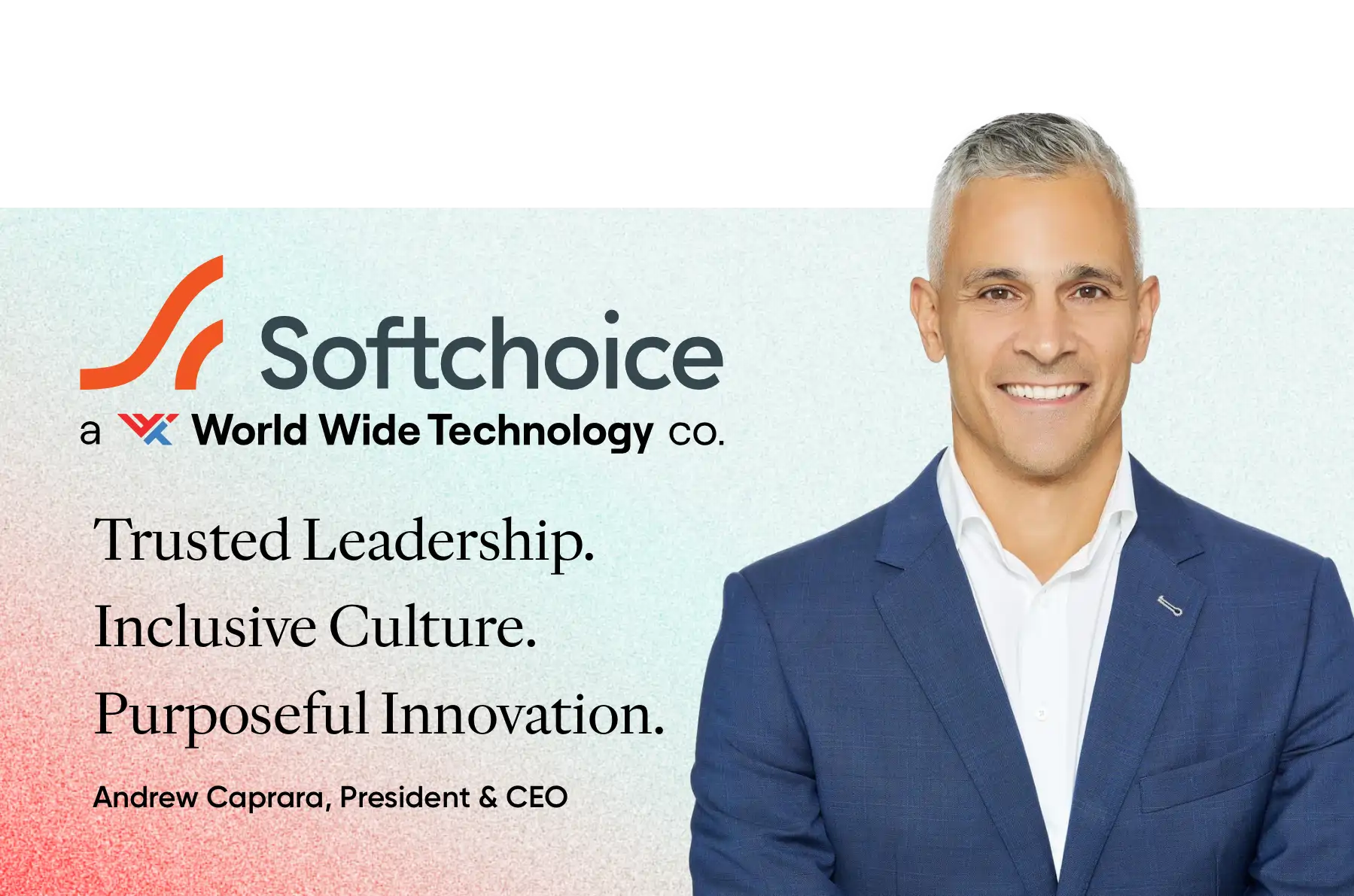
Company Culture, Leadership & Management, Mental Wellness
Canadian workplaces are at a crossroads. Tensions are high and so is workplace anxiety as we deal with uncertainty on a variety of fronts: from transformative technology to economic pressure to political perplexity, it’s hard to find any element of life that feels calm and secure. And because work plays such an important role in peoples’ lives, workplace anxiety features prominently.
The rapid integration of artificial intelligence (AI) continues to threaten workers’ sense of job security. Economic uncertainty in light of the US tariffs, and ambiguity about the future of our trading relationship weighs heavy on industries like automotive and energy and this spills over into almost every workplace. Compounding these challenges, the federal election revealed a real divide in Canada that creates even more uncertainty on top of the typical issues that arise from a new government and a new set of policies and priorities.
This perfect storm of AI disruption, trade tensions, and political instability means workplace anxiety needs to be a top priority. The Best Workplaces™ for Mental Wellness are those that are intentional about preserving psychological safety at work and providing corporate mental health initiatives that make a real difference. Their people know they can count on their leaders to provide a psychologically safe workplace that is open and honest about what is happening and where issues are dealt with straightforwardly and with integrity.
| At the Best Workplaces™ for Mental Wellness | |
| 88% of their employees agree that their workplace is psychologically and emotionally healthy. | |
| 87% of their employees believe they can ask management any reasonable questions and get a straight answer. | |
| 86% agree that management’s actions match its words. | |
| 83% believe management would lay people off only as a last resort. |
In uncertain times, it’s more important than ever to address workplace anxiety head-on and provide an array of corporate mental health solutions that empower your people to navigate these turbulent times.
AI Transformation and Workplace Anxiety
The impact of AI on the workplace is top of mind for leaders everywhere. However, only about 50% of workers globally think that AI will improve their work or benefit them in some way. This friction is a source of workplace anxiety that leaders need to address in order to capitalize on the productivity improvements presented by AI while at the same time minimizing the impact of automation on employee wellbeing.
Employees are worried on two fronts – they fear that AI tools like chatbots and robotics will eliminate their jobs completely, and/or they are feeling pressure to quickly acquire new skills that will allow them to work with AI effectively. As employers, it’s important to communicate honestly about AI by both addressing fears directly and equipping people with the skills they need to use the new technologies.
Economic Uncertainty and Workplace Anxiety
There is no doubt Canada’s economy is under strain. Inflation and high interest rates have been squeezing households and businesses for years, and now tariff and trade uncertainly is only exacerbating the situation. There are so many unknowns which makes planning very difficult. Adding to this unpredictability is a new government which only heightens workplace stress as employees grapple with unclear job prospects.
Workers across the country in public and private industry are genuinely worried about their job security and this creates a lot of fear, stress and anxiety. Employee burnout in an uncertain economy is an issue as people work harder to prove their worth and layoff anxiety can lead to a whole host of issues from difficulty concentrating to substance abuse. As employers it’s important to recognize the signs of workplace anxiety and emphasize the importance of stress management at work.
Solutions for Employers to Address Workplace Anxiety
The Best Workplaces™ recognize the pivotal role they play in mitigating workplace anxiety. Here are some proactive, employee-centered strategies that work:
1. Comprehensive AI Upskilling Programs
To alleviate AI-related fears, employers can invest in robust upskilling programs that equip workers to collaborate with AI technologies. The best programs include both technical training to learn how to use the actual tools as well as soft-skills training that focusses more on how to use AI to solve problems. For instance, employees need to learn how to use the analytics alongside understanding the cybersecurity issues AI presents. Transparency about AI’s role in the workplace by clarifying which tasks will be automated versus augmented will further reduce AI-related job stress. Ultimately, the best of these AI-skills programs also emphasize that while AI enhances efficiency, the things that technology cannot replace, namely empathy, human connection, and ethical leadership, are what really drive long term organizational success.
What employees can do?
Invest in knowledge and skill development. Enroll in courses online or in your community, read articles, or listen to podcasts to understand how AI is being used currently and what is projected to do in the next few years.
2. Transparent Communication
To counter workplace anxiety that arises from uncertainty, employers need to embrace open and honest dialogue. Regular town halls, weekly updates, open door policies and access to planning and strategy processes help employees understand potential changes and feel prepared. Anxiety is driven by the unknown so the more ‘in the loop’ employees feel, the less anxious they will be. Pairing these efforts with robust development programs including career paths and training opportunities, helps employees feel more in control of their careers and able to pivot as needed.
What employees can do?
Ask questions and stay informed. Talk to your manager about the changes they foresee. Engage with a variety of news sources and learn to think critically about information you hear and read.
3. Financial Wellness and Job Transition Support
There will be economic fallout from the uncertainty we are facing. The more you can help your people prepare, the better for everyone. Employers can play a key role in building resilience by offering financial wellness programs that help employees manage debt, budget effectively, and plan for the future. Additionally, job transition support like retraining for roles that are less vulnerable to trade disruptions, can prepare people for industry shifts. Continuous development programs like these are key to ensuring your people have the best skills for now and the future.
What employees can do?
Hope for the best and prepare for the worst. Create a budget and consult a financial planner to help you take control of your finances while you have some breathing room.
4. Stress Management and Mental Health Resources
Offering training in stress management techniques such as mindfulness, cognitive behavioral strategies, or resilience-building helps employees cope with AI and economic stressors. These programs can be tailored to the workplace challenges you are facing and should include flexible delivery options to maximize participation. Virtual stress reduction sessions, subscriptions to online stress management tools and mindfulness training are effective and inexpensive options. Remember to lead from the top by modeling healthy stress reduction strategies yourself.
What employees can do?
Practice positive reframing. Think about how AI can help you work faster/better. Get excited about learning new skills and embrace change as an opportunity to improve.
5. Robust Mental Health Resources
Where possible, provide accessible mental health supports including Employee Assistance Programs (EAPs) and subsidized therapy. Access to these formal programs gives employees the best tools to cope with the workplace anxiety they are experiencing. Even the smallest organizations, however, can train managers to recognize anxiety symptoms and foster a stigma-free culture that encourages employees to seek help.
What employees can do?
Leverage free and low-cost resources online, start journaling, talk about your feelings with your family and friends, and try practicing meditation or usings Apps like Calm or Headspace.
Final Thoughts
Workplace anxiety doesn’t have to define the future of work and mental health. Yes, there are challenges ahead, however we are well positioned to not only survive but thrive. Interventions like upskilling for AI, providing supports for mental, emotional and financial wellness, and ensuring transparent communication throughout our organizations mean we can transform workplace anxiety into workplace resilience. The Best Workplaces™ for Mental Wellness are doing just this and showing us that by building a future where mental health is prioritized, growth for all is possible.
Check out the Best Workplaces™ in Mental Wellness list, and explore our employee well-being resources to strengthen your own culture.
Get Certified
Want to know how your people feel about your hiring practices and workplace experience? Get Certified today and learn the answer to this question and gain many more insights along the way.






